People
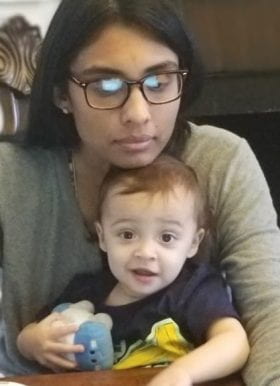
Bhooma Aravamuthan , MD, DPhil
Principal Investigator
I am a pediatric movement disorders physician and neuroscientist with expertise in basal ganglia network pathophysiology, dystonia and neonatal brain injury.
Inspired by my uncle who had recently been diagnosed with Parkinson’s disease, my graduate thesis was on the role of the pedunculopontine nucleus in balance and falls in the healthy and parkinsonian brain. I was fortunate to pursue these studies with a global group of mentors: Judie Walters, PhD, at the NIH, Tipu Aziz, FMedSci, at the University of Oxford, and Dora Angelaki, PhD, who, at that time, was at WashU. This work was funded by the NIH Graduate Partnerships Program, the George C. Marshall Scholarship and the WashU Medical Scientist Training Program. I received my DPhil (what Oxford calls a PhD) in 2008 and my MD in 2012.
During medical school, I realized that I most enjoyed working with children. The most common motor disability in children is cerebral palsy which results from injury to the developing brain and affects 2-3/1000 babies born every year. Cerebral palsy is mechanistically understudied – this is particularly true for dystonia, which is a debilitating, painful, underdiagnosed and undertreated movement disorder that is common in children with cerebral palsy. My career has since focused on these issues.
During residency and fellowship training in pediatric neurology and movement disorders at Boston Children’s Hospital and Massachusetts General Hospital, I began working with Seward Rutkove, MD, and developed rodent models of cerebral palsy that displayed dystonia. We showed that electromyography and nerve conduction studies could be used to distinguish dystonia from other motor problems in these animals.
As I started on faculty at WashU in 2018, I worked with Jordan McCall, PhD, to use neural circuit manipulation techniques (optogenetics/chemogenetics) and Steve Mennerick, PhD, to use slice electrophysiology to study the role striatal cholinergic interneurons play in causing dystonia following neonatal brain injury.
Now, in our lab, we use the techniques noted above in mouse models of neonatal brain injury together with clinical studies to move closer to curing dystonia in people with cerebral palsy.
In my “spare” time, I enjoy playing with my three kids (twin boys and a girl), watching really good and really bad TV and dreaming about eating in amazing St. Louis restaurants again.
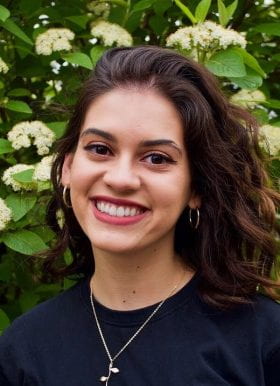
Frances Avila-Soto, BS
I’m a Phase 1 (first year) student at WashU. My career interests are still broad at the moment, but I would like to go into a pediatric subspecialty and incorporate health equity and advocacy into my work.
Fun fact: My family and I have a habit of rescuing (too many) pets.
We will be studying how social and structural determinants of health (SSDOH) and healthcare disparities impact the incidence and experience of individuals with cerebral palsy.
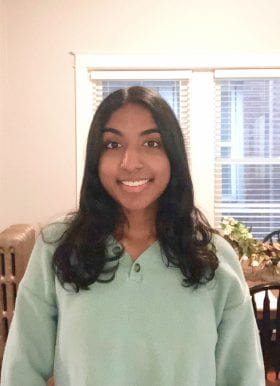
Keerthana Chintalapati
I am a junior at Washington University in St. Louis studying genomics and computational biology with a minor in math.
Fun Fact: I love the ocean, and my favorite summer activity is snorkeling!
In the Aravamuthan lab, I analyze MRI Apparent Diffusion Coefficient (ADC) values and structure volumes from children with Cerebral Palsy to objectively examine whether these values can predict the development of dystonic Cerebral Palsy.

Sushma Gandham
I am a senior at WashU majoring in neuroscience and minoring in religious studies. In my free time, I enjoy cooking, playing the violin and watching movies.
Fun fact: I run a food Instagram with my friends called @3fooddoods.
My research with Aravamuthan has involved stereologic characterization of neuronal injury in mice and rats after neonatal brain injury. My current research project aims to automate the process of characterizing rat movements for greater efficiency and precision when performing gait analysis.

Kat Gemperli, AB
I am a research technician that recently graduated from Washington University with a major in neuroscience. My projects include coming up with new ways to continuously deliver DREADD ligands to mouse pups and developing a mouse model of premature birth.
In my free time, I enjoy rock climbing, making art and playing with my pet rats.

Laura Gilbert, DO, MBA
I am a fourth-year pediatric neurology resident and one of the incoming administrative chief residents at Washington University in St. Louis. I attended Northwestern University for my undergraduate education and worked as a clinical research coordinator after graduation at the Feinberg School of Medicine prior to obtaining a dual degree DO/MBA in Healthcare Administration from Kansas City University/Rockhurst University.
Fun fact: I am an ex-professional hip hop dancer!
My clinical interests mainly include dystonia in cerebral palsy (CP) as well as pediatric deep brain stimulation. I have worked with Aravamuthan on several research projects related to dystonia in CP, and next, I will be working with her on a rigorous characterization study to delineate the clinical spectrum of children with dystonia in CP that will help guide the clinical approach to this patient population and improve patient outcomes.
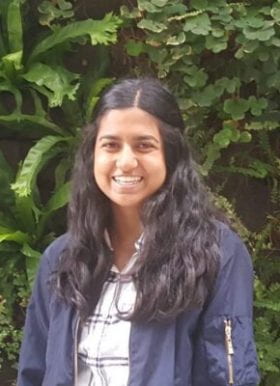
Arohi Saxena, BS
I’m a first-year medical student at WashU with an interest in neurology and experience doing clinical research with adult movement disorder patients.
Fun Fact: I was a competitive ballet dancer in middle and high school.
Our project is aiming to develop a motion capture video system to objectively detect movement features that can help predict dystonia and cerebral palsy in at-risk newborns.

Esther Tak, BS
After obtaining an undergraduate degree in pharmaceutical sciences with an emphasis in health sciences, I’m working on a PharmD degree. I am interested in understanding motor phenotype characterization of animal models of disease that can serve as the basis for drug development as well as the physiology of dystonia in cerebral palsy. Currently, I’m optimizing electromyography techniques and analysis in free-moving mice with Aravamuthan.
Outside of the lab, I enjoy discovering new coffee shops, reading the classics and mentoring local high school students interested in STEM.
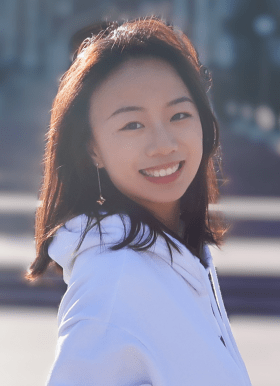
Victoria Zhang, BS
I am an MS candidate student in computer science at Washington University in St. Louis. I am working with Aravamuthan to create a real-time animal pose tracking framework capable of estimating animal behaviors via optical flow. My research interests include signal and image processing, machine learning, computer vision, and statistical inference. I received my BS in computer science and BS in electrical engineering at WashU in 2020. Outside of the lab, I am a bird lover and enjoy teaching my cockatiel Ashe cool tricks.